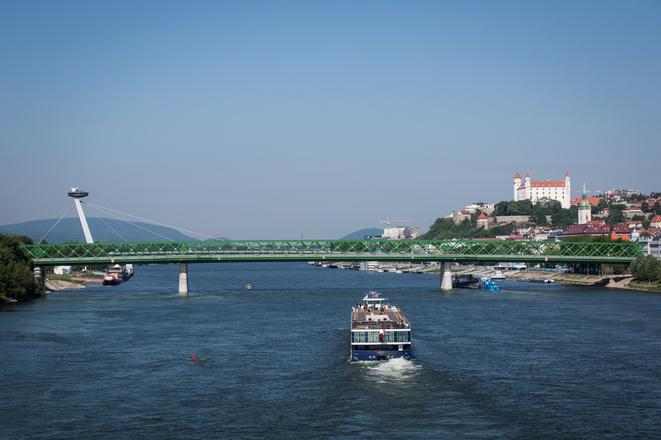The Danube River is a relatively clean river compared with others in Slovakia and the quality of water in Danube has been improving with exception of one parameter - conductivity - according to the Water Research Institute (WRI).
“All large rivers in Slovakia, which means the Danube, Morava, Hron, Ipeľ, Slaná, Hornád, Bodrog and Poprad, are in average condition,” concluded WRI. “The most polluted rivers in Slovakia are Nitra and Small Danube, which are in bad condition.”
Scientists and researchers ascribe the good quality of water in the Danube to its size, its natural self-purification abilities and protection against polluting in Austria.
“Good water quality in the Danube River in Slovakia is a consequence of particularly two factors: firstly it is the large amount of water flowing in Danube and thus the river is able to absorb a relatively large amount of pollution without any significant drop in the water quality, and secondly the Danube is flowing to Slovakia from Austria,” Matúš Kúdela from the Faculty of Natural Sciences of the Comenius University told The Slovak Spectator.
WRI added that the self-purification ability of Danube is large in respect to the amount of microorganisms participating in the self-purification processes as well as because of the significant diluting effect thanks to the size of the river.
Results of monitoring of the water quality between 2007 and 2015 have shown that the ecological condition of the Danube is average and that the chemical condition is good, according to WRI. The analysis of trends in quality of the Danube’s water has confirmed that the situation in pollution with organic pollution and pollution with nutritive substances has been improving since 1989.
“The conductivity is an exception, where the trend is upward,” the Water Research Institute pointed out.
The conductivity, an indicator of the concentration of dissolved ions in the water, is one of parameters of water quality and ecological condition of rivers.
“The increase of concentration of soluble salts has been obvious during the recent period of time,” notes WRI, seeing among reasons polluting from fields, treatment of roads with salt during winter but also sewages even though the latter is regulated in Slovakia.
Among other conditions affecting water quality in rivers is their hydrological and morphological conditions.
Hydromorphology, the physical characteristics of the shape, boundaries and content for a body of water, creates conditions for water organisms and thus also affect the conditions of rivers in a significant way, WRI explained. It added that the Danube is an example where past organic polluting as well as polluting by nutritive substances has decreased, but organisms react also to the hydromorphology. On the basis of evaluation of indexes responding to hydromorphological changes of the river basin Danube, the condition is average.
Water quality in the Danube, when this river via its underground water supplies Bratislava and its significant vicinity with drinking water, has been monitored since the 1950s. There are monitored more than 75 indicators on the total length of the Danube in Slovakia.
Risks for water quality
Kúdela sees current agriculture as the biggest threat for the quality of water in Danube. This is because agricultural land takes up a significant portion of its banks and because of permanent usage of many chemicals that get into surface water.
“A potential problems are, of course, various accidents accompanied with leakage of polluting agents into the river,” said Kúdela.
Room for improvement
Experts see room for improvement of quality of water in the Danube by removing barriers in the flow of the water and building of new water treatment plants.
Kúdela also believes that future measures should concentrate on improvement of quality of water of main tributaries of the Danube in Slovakia, including the Morava, Váh, Nitra and Hron — because quality of water in these rivers is worse than in Danube. The report includes a s special chapter on the pollution in the Small Danube.
“In the Danube itself especially improvement of self-purification abilities of the river may contribute to improvement of the water quality,” said Kúdela. “This means re-connecting the Danube River with networks of its distributaries, renewal of flood areas and adjustments of the river bed in order it is closer to its original, natural, condition.”



 The Danube River in Bratislava. (source: Sme)
The Danube River in Bratislava. (source: Sme)